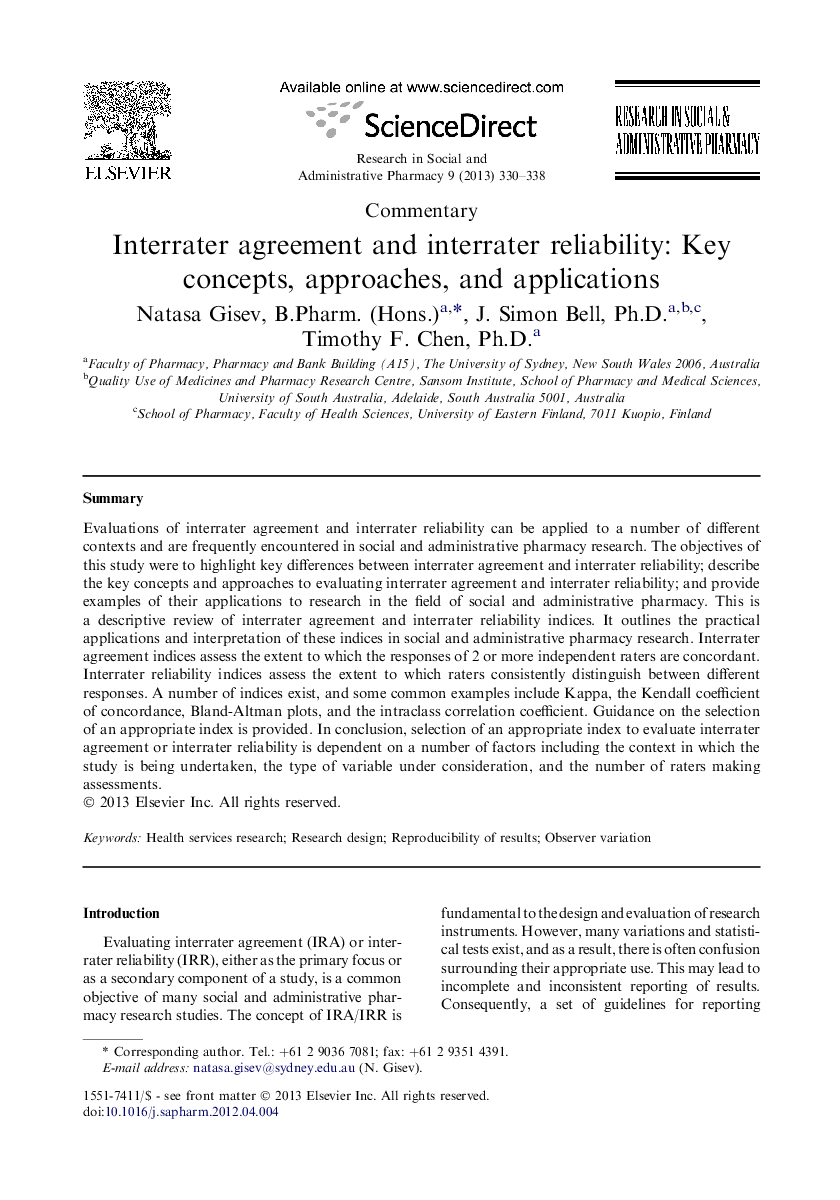| Article ID | Journal | Published Year | Pages | File Type |
|---|---|---|---|---|
| 2508655 | Research in Social and Administrative Pharmacy | 2013 | 9 Pages |
SummaryEvaluations of interrater agreement and interrater reliability can be applied to a number of different contexts and are frequently encountered in social and administrative pharmacy research. The objectives of this study were to highlight key differences between interrater agreement and interrater reliability; describe the key concepts and approaches to evaluating interrater agreement and interrater reliability; and provide examples of their applications to research in the field of social and administrative pharmacy. This is a descriptive review of interrater agreement and interrater reliability indices. It outlines the practical applications and interpretation of these indices in social and administrative pharmacy research. Interrater agreement indices assess the extent to which the responses of 2 or more independent raters are concordant. Interrater reliability indices assess the extent to which raters consistently distinguish between different responses. A number of indices exist, and some common examples include Kappa, the Kendall coefficient of concordance, Bland-Altman plots, and the intraclass correlation coefficient. Guidance on the selection of an appropriate index is provided. In conclusion, selection of an appropriate index to evaluate interrater agreement or interrater reliability is dependent on a number of factors including the context in which the study is being undertaken, the type of variable under consideration, and the number of raters making assessments.
